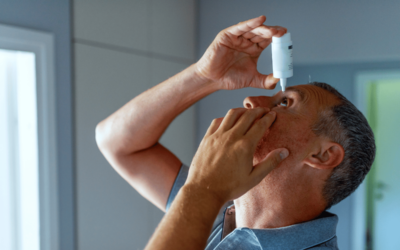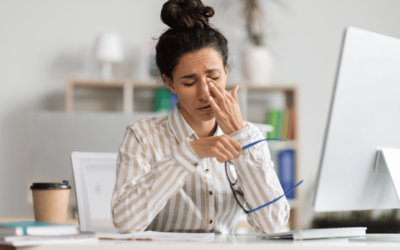Dry eye disease happens when the eyes do not produce enough tears or when the tears evaporate too quickly, leading to discomfort and irritation. While anyone can experience dry eye symptoms, certain risk factors increase the likelihood of developing the condition. Knowing these risk factors can help you take steps to prevent or manage dry eye disease.
1. Age
One of the main risk factors for developing dry eye disease is age. As we get older, our eyes produce fewer tears, which can lead to dryness and discomfort. People over the age of 50 are especially susceptible to dry eye disease and should take precautions to protect their eyes. If you’re in this age group, make sure to visit your eye doctor regularly to monitor your eye health and get proper treatment for dry eye disease.
2. Gender
Women are more likely than men to develop dry eye disease, especially after menopause. Hormonal changes during menopause can affect tear production, leading to uncomfortable symptoms such as dryness, irritation, and burning. Women who are pregnant or taking birth control pills are also at an increased risk of dry eye disease. To reduce your risk, it is important to talk to your doctor about any hormonal changes or medications that may be affecting your eye health.
3. Certain medications
Certain medications can cause dry eye disease, including antihistamines, antidepressants, and blood pressure medications. Talk to your healthcare provider if you experience symptoms of dry eyes while taking any medication. They may recommend switching to a different medication or adjusting the dosage.
4. Environmental factors
Environmental factors, such as wind, smoke, and dry air, can all contribute to dry eye disease. Individuals who work in air-conditioned environments or spend a lot of time outdoors should be proactive in protecting their eyes. Wearing sunglasses and using a humidifier can help reduce your risk.
5. Medical conditions
Individuals with certain medical conditions, such as rheumatoid arthritis, thyroid disease, and lupus, are at a higher risk of developing dry eye disease. If you have a medical condition that can affect your eye health, it’s important to discuss potential risks with your healthcare provider.
While dry eye disease can be uncomfortable and bothersome, understanding the risk factors can help you take proactive measures to prevent and manage the condition. Aging, environmental factors, underlying medical conditions, certain medications, and lifestyle choices all play a role in dry eye development. By addressing these risk factors and scheduling regular eye exams, you can reduce the impact of dry eye disease on your daily life. If you’re experiencing dry eye symptoms, schedule an appointment with our eye doctor in Denham Springs to learn how you can get relief.



